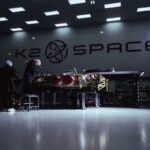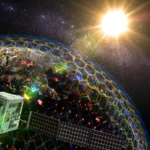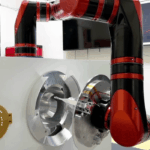A U.S.-Russian crew of three began a mission on the International Space Station after being launched there on a Russian spacecraft Thursday.
phys.org5- Page
The European Space Agency said Thursday it would increase its budget for the next three years to almost 22.1 billion euros ($25.6 billion).
Using its Near-InfraRed Camera (NIRCam), NASA’s James Webb Space Telescope captured never-before-seen details of the Red Spider Nebula, a planetary nebula, in this image released on Oct. 26, 2025. NIRCam
A telescope in Chile has captured a stunning new picture of a grand and graceful cosmic butterfly.
NASA has confirmed that it will contribute to Europe’s Martian rover Rosalind Franklin, which is scheduled to launch in 2028 after repeated delays, the European Space Agency said on Wednesday.
Scientists working with the James Webb Space Telescope discovered three unusual astronomical objects in early 2025, which may be examples of dark stars. The concept of dark stars has existed
A team of astronomers from the International Center for Radio Astronomy Research (ICRAR) has released new data from an extensive galaxy evolution survey that found a galaxy’s “neighborhood” plays a
In the early 1930s, Swiss astronomer Fritz Zwicky observed galaxies in space moving faster than their mass should allow, prompting him to infer the presence of some invisible scaffolding—dark matter—holding
Boeing and NASA have agreed to keep astronauts off the company’s next Starliner flight and instead perform a trial run with cargo to prove its safety.
The outer planets of the solar system are swarmed by ice-wrapped moons. Some of these, such as Saturn’s moon Enceladus, are known to have oceans of liquid water between the
-
 012024 in Review: Highlights from NASA in Silicon Valley
012024 in Review: Highlights from NASA in Silicon Valley -
 02Panasonic Leica Summilux DG 15mm f/1.7 ASPH review
02Panasonic Leica Summilux DG 15mm f/1.7 ASPH review -
 03How New NASA, India Earth Satellite NISAR Will See Earth
03How New NASA, India Earth Satellite NISAR Will See Earth -
 04From Polymerization-Enabled Folding and Assembly to Chemical Evolution: Key Processes for Emergence of Functional Polymers in the Origin of Life
04From Polymerization-Enabled Folding and Assembly to Chemical Evolution: Key Processes for Emergence of Functional Polymers in the Origin of Life -
 05And Thus Begins A New Year For Life On Earth
05And Thus Begins A New Year For Life On Earth -
 06Astronomy Activation Ambassadors: A New Era
06Astronomy Activation Ambassadors: A New Era -
07SpaceX launch surge helps set new global launch record in 2024





